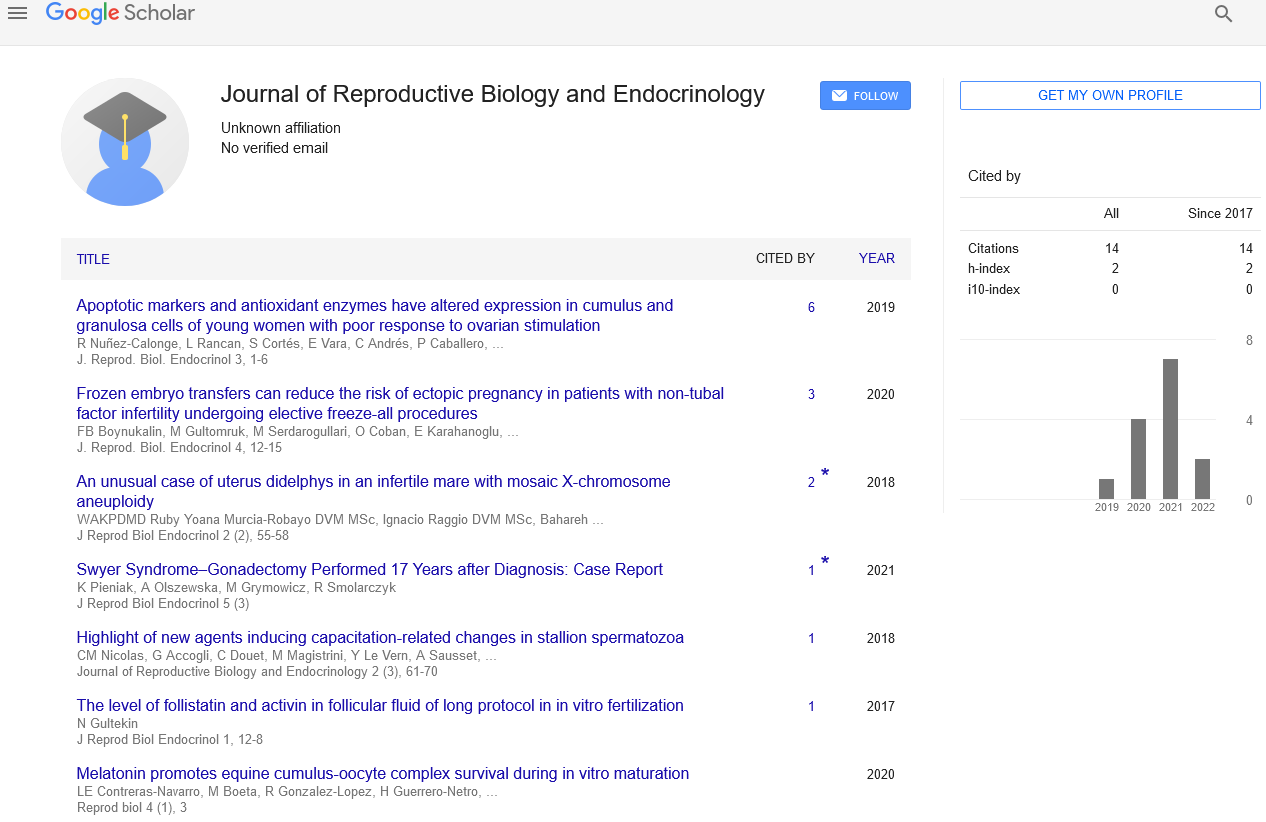Urogynecology Surgery for Improving Postoperative Efficiency
Received: 12-Jun-2023, Manuscript No. PULJRBE-23-6515; Editor assigned: 13-Jun-2023, Pre QC No. PULJRBE-23-6515 (PQ); Accepted Date: Jun 28, 2023; Reviewed: 15-Jun-2023 QC No. PULJRBE-23-6515 (Q); Revised: 19-Jun-2023, Manuscript No. PULJRBE-23-6515 (R); Published: 30-Jun-2023, DOI: 10.37532/PULJRBE .2023.7(2).1-2
Citation: Williams A. Urogynecology Surgery for Improving Postoperative Efficiency. J. reprod. biol. endocrinol. 2023;7(2):1-2.
This open-access article is distributed under the terms of the Creative Commons Attribution Non-Commercial License (CC BY-NC) (http://creativecommons.org/licenses/by-nc/4.0/), which permits reuse, distribution and reproduction of the article, provided that the original work is properly cited and the reuse is restricted to noncommercial purposes. For commercial reuse, contact reprints@pulsus.com
Abstract
In urology, for example, a significant portion of medical activity is related to functional problems. Lower Urinary Tract Symptoms (LUTSS), which reduce quality of life, require urgent therapy and, ideally, primary examination in the community. When conservative treatment is ineffective if any of the following disorders coexist: haematuria, recurrent urinary infection, prolapse, masses, or neurological issues.
The participant in the void trial underwent the following procedure: the catheter was removed, the bladder was backfilled with 300 mL of normal saline, and they were instructed to void right away. By catheterization or a sonographic bladder scan, PVR volume was measured. From 50 mL to 225 mL,void volumes were divided into categories in increments of 25 mL. The PVR and void trial outcome data were taken into account for each range of voided volumes in order to evaluate the sensitivity, specificity, Positive Predictive Value (PPV), and Negative Predictive Value (NPV) of the voided volume alone as a predictor of a passing void trial outcome. The volumes that were voided were used to construct an algorithm that maximises PPV and NPV. Websites for urogynecology fellowship programmes are a valuable resource for prospective applicants; especially in light of the ongoing COVID-19 pandemic and its associated travel restrictions. In order to promote the subspecialty of urogynecology, our study assessed the publicly available information on the websites for American and Canadian urogynecology fellowships.
Key Words
ostoperative care algorithm; Postoperative voiding dysfunction; Void trial
Introduction
Each year, more and more women have surgery for pelvic organ prolapse, stress incontinence, or both. There is a high incidence of postoperative voiding dysfunction after these surgeries. Historically, suprapubic catheters or indwelling transurethral Foley catheters were frequently used for a few days to a few weeks following open colposuspenion and bladder neck sling procedures until adequate voiding function was ensured. Recently, the frequency and length of postoperative catheterization have decreased due to the growing use of minimally invasive surgery and the invention of midurethral slings. However, postoperative voiding dysfunction, whose estimated occurrence following pelvic reconstructive surgery ranges from 11% to 84% in certain studies, remains to be a major problem.
A joint meeting of urologists and urogynecologists from three different medical societies was held in Denver. The majority of members of the International Continence Society (ICS) are urologists. The ICS annual meeting is the most significant educational event for urologists interested in neurourology and female urology, second only to the American Urological Association's annual meeting. The meeting's main topic was overactive bladder. In addition to the 57 abstracts presented, the International Children's Continence Society's programme featured cutting-edge lectures on bladder function maturation during postnatal development and desmopressin treatment of nocturnal enuresis. This new society has several hundred international members. An established and well-known worldwide society is the International Urogynecology Association (IUA). The two gatherings are this one and the annual meeting of the American Urogynecological Society.
Conclusion
Although urogynecology is a relatively young branch of surgery, there is a growing demand for its services, which points to the necessity of fellowship-trained surgeons. The research for this article shows that websites for urogynecology fellowship programmes in the United States and Canada generally contain a lot of information that is useful to applicants. The depth of the sections on Clinical Work and Benefits and Career Planning on both the American and Canadian programme websites should be increased for the benefit of applicants. One of the primary means of contact between urogynecology programmes and prospective candidates is programme websites, particularly in light of the current COVID-19 pandemic and the ensuing regional and international travel restrictions. Programs can reach a large audience and entice the most qualified individuals with the help of an extensive.





